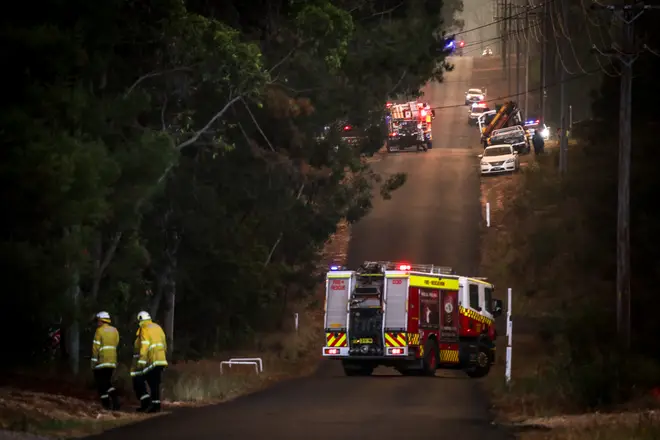
Simon Marks 3pm - 7pm
21 December 2019, 09:14

Australia continues to battle "catastrophic" wildfires as the severe heatwave and drought crisis continues.
A person in South Australia was confirmed as the latest casualty today. It comes after 15 homes were destroyed by a fire 25 miles from the state capital Adelaide.
It follows the deaths of two volunteer firefighters who were battling blazes in the country's most populous state of New South Wales (NSW) on Thursday.
EMERGENCY WARNING - Gospers Mountain Fire (Hawkesbury and Lithgow LGAs)
— NSW RFS (@NSWRFS) December 21, 2019
Fire continues to burn below the Bells Line of Road. The southerly change is due to impact this fire within coming hours. Video shows the fire approaching the Fruit Bowl along Bells Line Of Road, Bilpin. pic.twitter.com/0gvSEgsayL
Around three million hectares (7.4 million acres) of land has burnt nationwide during a torrid bushfire season, with nine people killed and more than 800 homes destroyed. It is a record drought period in Australia with no significant rainfall predicted for up to six weeks.
November’s rainfall was the lowest on record for Australia, severe water shortages are in place in the Murray–Darling Basin in the south-east, and water restrictions are in place in Sydney.
Catastrophic fire conditions have been declared in NSW as temperatures were forecast to reach 47C (115F) in western Sydney on Saturday.
EMERGENCY WARNING - Gospers Mountain fire (Lithgow and Hawkesbury LGA)
— NSW RFS (@NSWRFS) December 21, 2019
Dangerous fire conditions are being experienced across the fireground. The large fire is burning on multiple fronts. This video shows the area north of Lithgow this afternoon. pic.twitter.com/hoR1NUYVh7
NSW Rural Fire Services Commissioner Shane Fitzsimmons said: "Catastrophic fire conditions are as bad as it gets.
"Given we have a landscape with so much active fire burning, you have a recipe for very serious concern and a very dangerous day."
In South Australia, authorities said 23 firefighters and several police have also suffered, as more than 40,000 hectares (98,842 acres) of land burnt.
"It is going to be a real scene of devastation, especially for those people in the Adelaide Hills who have been most affected," South Australia Premier Steven Marshall said.
"We know that in addition to the buildings and vehicles lost there are very significant losses in terms of livestock, animals, crops, vineyards."
The annual Australian fire season, which peaks during the Southern Hemisphere summer, started early after an unusually warm and dry winter.
The devastation has put pressure on Prime Minister Scott Morrison, who has received criticism for going on a family holiday in Hawaii during the wildfires crisis.
He apologised on Friday for "any offence caused to any of the many Australians affected by the terrible bushfires by my taking leave with family at this time".
Mr Morrison said he would cut short his holiday and was expected to return to Sydney on Saturday, where he is due to visit the Rural Fire Service headquarters.
Debate has reignited on whether Mr Morrison's conservative government has taken enough action on climate change. Australia is the world's largest exporter of coal and liquefied natural gas.
Fatih Birol, International Energy Agency executive director, believed Australia had missed opportunities to mitigate the impact of coal.
"I find the Australian energy debate far too emotional, far too nervous and far too hot. It is hotter than the climate change itself," he told The Sydney Morning Herald and The Age.
Mr Morrison, who critics have deemed a climate change sceptic, conceded earlier this month that "climate change along with many other factors" contributed to the wildfires.